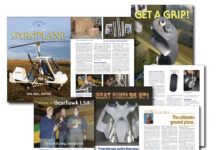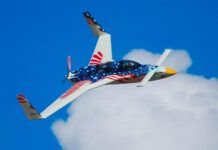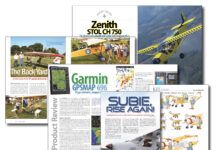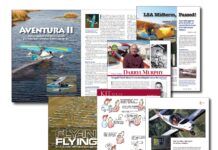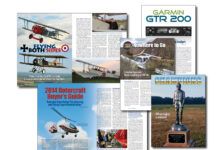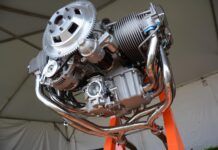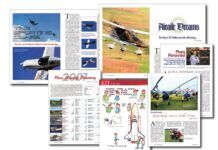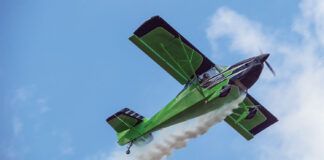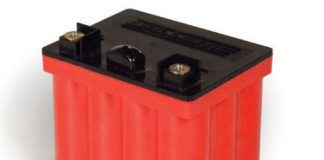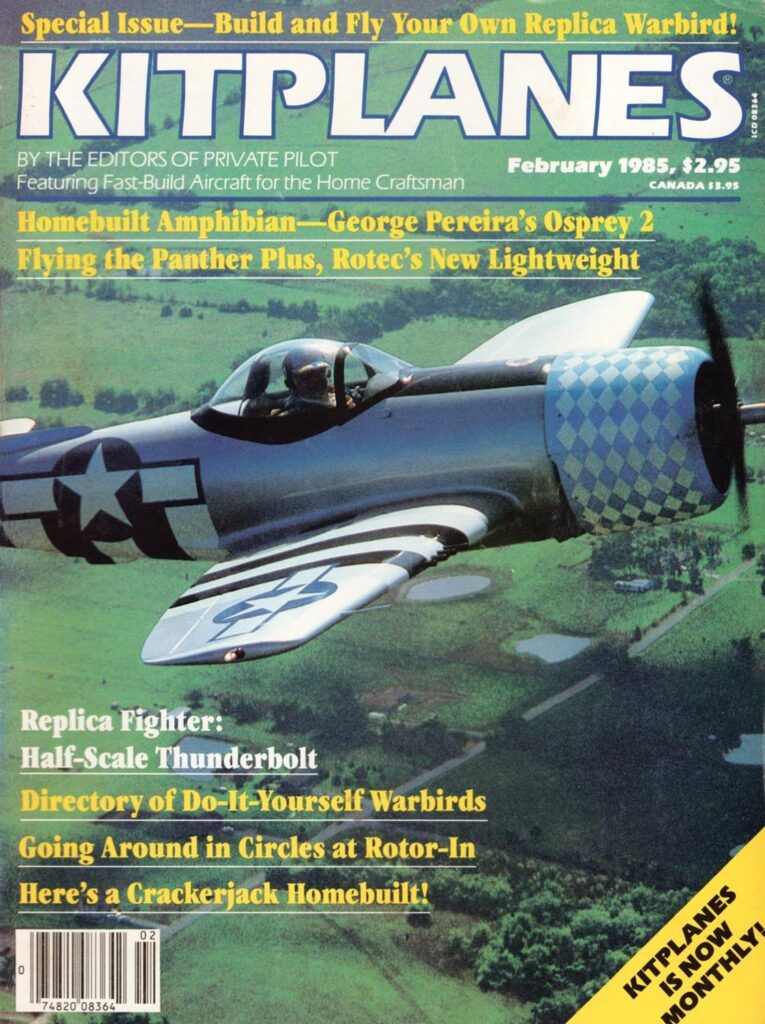
A close-up view of Al Gettings’ half-scale P-47 Thunderbolt was on our February 1985 cover, a heady offering after just a few issues of KITPLANES being a standalone, monthly magazine begun just the summer before. As longtime aviation journalist LeRoy Cook reported, Gettings was no Walter Mitty, having flown Hellcats and Corsairs off carriers in the Pacific. “So, when he decided to build a WAR P-47 Thunderbolt he wasn’t trying to live out an unfulfilled dream,” Cook said in the cover feature. “He was just out to have some fun while he was home from flying TWA’s 747 jumbo jets.” While the scale Thunderbolt did fly with a four-blade prop, just like the original, there was a bit less juice behind it: a Continental O-200-A borrowed from a Cessna 150. Performance is good considering the horsepower: a stated 135 mph, with a 165-mph top speed. The flapless airplane stalled at 78 mph, so the approaches were made at 100 mph until short final. According to Cook, Geddings “cautions that this is a very complicated little airplane, not an easy task for the first-time builder.”
Accompanying the main feature was a “directory of warbird replicas,” needing all of three pages. These offerings were about evenly split between kits and plans-only designs. The most expensive kit (only) was the Mustang from Historical Aircraft Corporation out of Durango, Colorado. The kit cost $30,000 ($76,000 in today’s money) and was meant to use a Ford 351-cube V-8 of around 300 hp.
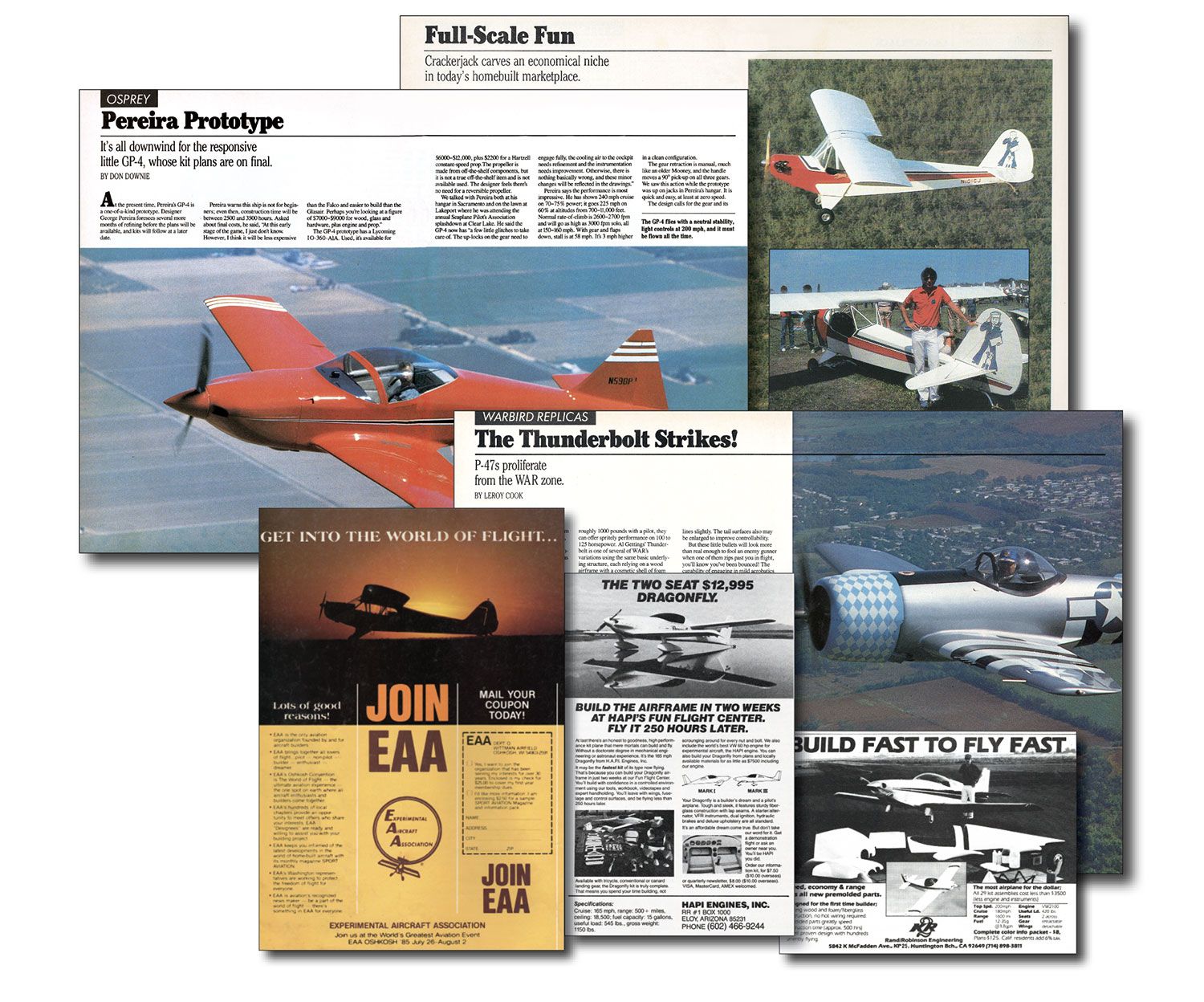
Looking now at full-scale aircraft, Don Downie reported on the Pete Plumb single-seat Crackerjack. According to the designer, “I was too broke to own a Cub and I wanted something that would burn less than 4 gph, so I had to go ahead with my own design and build it. By the time I make a few more refinements, my ship should stay right with the older Piper Cubs and burn only half as much fuel.” How did he do it? With a two-cylinder DAF engine built in Holland, the Crackerjack made the most of its 32 installed horsepower. “The DAF engine was exactly what I wanted,” the builder said. “But it was poorly put together. However, it did fly the airplane well. My brother Bob, who is an A&P, helped me tear it apart, go over it thoroughly and reassemble it. To my knowledge, there were only five DAF engines sold in the U.S. prior to our use, and they all blew up.”
Former editor Dave Martin flew the Rotec Engineering Panther Plus, an ultralight-style single-place design with a high-mounted Rotax 447 two-stroke engine. Too heavy to be a pure ultralight, the Panther Plus had a design very much informed by ultralight orthodoxy of the time, including surfaces of non-porous Dacron and a boom-style tail section; it also had spoilers instead of ailerons for roll control. Martin summed it up by saying: “The Panther Plus is a pleasant-flying little airplane with three characteristics of ultralights which may appeal to a significant segment of the licensed-pilot homebuilder market: take-it-home portability, short building time (only 40–60 hours…) and relatively low cost for a complete airplane kit: $6800.”
At the other end of the speed scale, we wrote about George Pereira’s GP-4 prototype, which, unlike many of the designs that graced our early pages, did actually succeed with builders—in part for performance: a claimed 240 mph on 200 hp. Pereira reported the handling qualities this way: “Even from the start, I’ve been delighted with the way it flies. There is neutral stability, and it goes in any direction you aim it. The controls are quite light at 200 mph but the ailerons stiffen up a little after that. It is not as sensitive on the controls as a Pitts, but you have to fly it all the time. Like many jets, it is not stabilized by itself; roll it into a turn and it stays there.”

